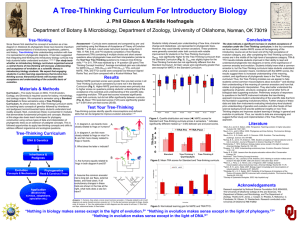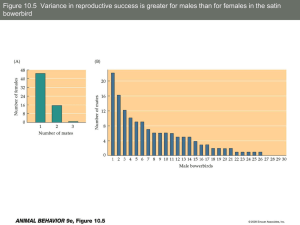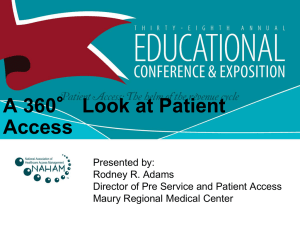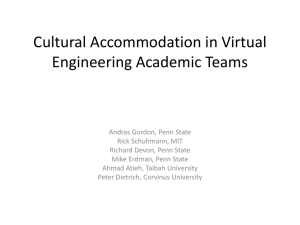Tree Thinking - University of Oklahoma
advertisement
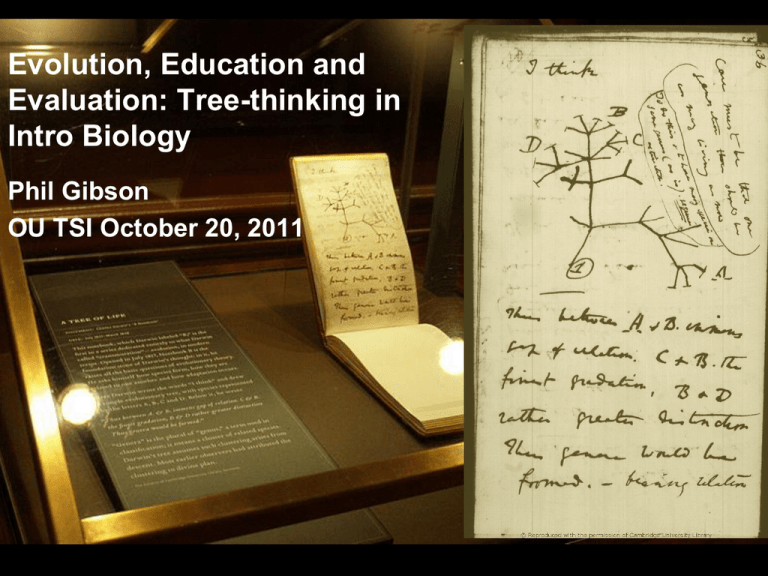
Evolution, Education and Evaluation: Tree-thinking in Intro Biology Phil Gibson OU TSI October 20, 2011 Miller, J.D., E.C. Scott, and S. Okamato. 2006. Public Acceptance of Evolution. Science. 313: 765-766. The Basic Ideas of Tree-thinking “Nothing in biology makes sense except in the light of evolution." Theodosius Dobzhansky (1973) “Nothing in evolution makes sense except in the light of phylogeny.” (Society of Systematic Biologists 2001). “Nothing makes sense in phylogeny except in the light of DNA.” (Kalinowski et al. 2010) Tree-Thinking Tree-Thinking What we want to know • Question #1: What is the relationship between ability to read phylogenetic trees relate and acceptance of evolution? • Question #2: How does student understanding of natural selection and genetics relate to understanding and acceptance of evolution? • Question #3: Will a tree-thinking based curriculum using active learning modules improve student understanding and acceptance of evolution and evolutionary theory? BIOL 1134 Evolution, Ecology, & Diversity 1. Encourage understanding and appreciation for major, modern biological thought and theories: – Unity and diversity of life (DNA and genetic variation) – History of life (evolution and phylogeny) – Relationship between structure and function (adaptation) – Focus on life at the individual, population, community, and ecosystem levels (hierarchical organization, interdependence) 2. Develop student skills, understanding, and appreciation for the nature of science. – Thinking, reasoning, and problem-solving in biology. – Prediction and hypothesis testing in science. – Data collection, analysis, and interpretation – Group collaboration and interactions. Tree-thinking Curriculum Structure DNA & Genetics Inheritance & Pedigrees Phylogenetics Read & Construct Trees Evolution Concepts & Mechanisms Application (Biodiversity surveys, adaptations, speciation etc.) Components of the curriculum. • Genetic basis of phylogeny & tree thinking: genetics, inheritance, and population genetics • Principles of tree-thinking: how-to of phylogeny construction and interpretation • Application of tree-thinking: opportunities to collect and analyze data, processes of hypothesis development and testing • Modules: Case study, group inquiry, active learning Pedigree Analysis & Genetics Phylogeny of Domestic Dog Breeds – Result of Artificial Selection Platypus Reproduction & Mammalian Evolution Pollination and Floral Evolution A Deadly Passion: Evolution of Sexual Cannibalism Scorpion Praying mantis Australian redback spider Assessment & Evaluation • Measure of the Acceptance of the Theory of Evolution (MATE): 20 question Likert-scale survey (Rutledge & Sadler 2007) • Tree-thinking Challenge, Understanding Phylogenetic Trees, Tree Thinking Concept Inventory Variety of questions to read and construct phylogenetic trees. (Baum et al. 2005, Meir et al. 2007, Neagle 2009) • Concept Inventory of Natural Selection, Genetics Concept Assessment (Anderson & Fisher 2002, Smith et al. 2008) MATE pre-post Comparison * 100.0 * * 80.0 60.0 40.0 20.0 0.0 F09 pre F09 post S10 pre S10 post F10 pre F10 post S11 pre S11 post Tree Reading Assessments 25 20 15 10 5 0 F09 pre F09 post S10 pre S10 post F10 pre F10 post S11 pre S11 post MATE & TTCI Spring 2011 120 100 MATE score 80 60 Pre-test Post-test 40 20 0 0 5 10 15 Tree-Thinking Concept Inventory score 20 25 MATE, Natural Selection & Genetics 120 100 MATE Score 80 60 Pre-test Post-test 40 20 0 0 5 10 15 20 25 30 Genetics & Natural Selection Concept Inventory Score 35 40 Normalized Learning Gain 1 TRA/TTCI MATE Normailized Gain 0.8 0.6 0.4 0.2 0 F09 S10 F10 -0.2 Curriculum S11 Deeper Analysis & the Education Literature • The education literature is rich with techniques for further analysis • Item Analysis, Discrimination Index calculations, Cronbach’s α provide further insights that basic statistics don’t reveal. • Further analysis of specific questions and answers. What we’ve learned so far. . . • Tree-thinking curriculum appears to increase understanding and acceptance of evolutionary theory. • Acceptance of evolution is related to tree-thinking ability knowledge of natural selection, and knowledge of genetics. • Better assessments are needed. • There’s more work to do! Acknowledgements • National Science Foundation – DUE #0940835 • The University of Oklahoma – College of Arts and Sciences, Department of Botany and Microbiology, Department of Zoology • J. Cooper, M. Jones, S. Rhodes, A. Makowicz, C. Poindexter, M. Gibson, D. Washecheck All research conducted under OU IRB# 12682
